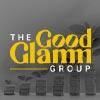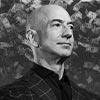Amazon Bets Big on Premium Beauty to Offset Tariffs This Prime Day

News Synopsis
With tariffs from the Trump administration still affecting imports from China and other regions, Amazon is shifting its Prime Day strategy by emphasizing high-margin luxury beauty products. The retail giant’s Amazon Premium Beauty category is central to this shift, as it offers strong profit margins and appeals to consumers even amid economic uncertainties.
Fewer Sellers, But Premium Beauty Gains Ground
Facing tariff-induced margin constraints, several sellers are opting out of Prime Day 2025, which runs from July 8–11. In response, Amazon is prioritizing categories like cosmetics and personal care, where demand remains stable and product margins are favorable.
“Beauty has become, in the past few years, more of an essential item in consumers’ minds,” said Anna Mayo, Vice President of NielsenIQ’s Beauty Vertical.
Premium Beauty: From Niche to Mainstream on Amazon
Initially shunned by luxury brands due to brand image concerns, Amazon’s Premium Beauty program has since built credibility, now hosting globally recognized names such as Estée Lauder’s Clinique, Olaplex, and L’Oréal’s Urban Decay. The company has invested in combating counterfeits and boosting consumer trust.
“They are making a lot of money on premium beauty products because they’re small and expensive, and you can ship a ton of them,” said Renee Parker, co-founder of Invinci and a former Amazon executive.
Premium Beauty Sees Double-Digit Growth
Between April 2024 and April 2025, Amazon’s Premium Beauty category surged by nearly 20% to $15 billion, outperforming the 14% growth in the overall beauty sector and the 5% YoY rise in online retail overall, according to NielsenIQ.
Why Beauty Products Make Strategic Sense
Small, Lightweight, and High-Value
Luxury cosmetics are ideal for e-commerce: they are compact, valuable, and easy to ship—key qualities that help Amazon maintain profitability in the face of rising import costs.
Discounts Expected to Be Modest
Unlike electronics, which may see 14%–22% discounts, beauty items are expected to have milder discounts ranging from 10% to 17%, according to Adobe Analytics.
Brands Shift to Local Sourcing to Dodge Tariffs
Luxury brands have begun localizing supply chains to mitigate tariff impacts. For instance, Estée Lauder sources over 75% of its U.S. inventory from the U.S. or Canada, making its products less affected by tariffs.
The brand has already launched 11 product lines on Amazon’s U.S. site since March 2024.
“At a high level, most of the premium brands’ sourcing strategies are local, and therefore, the (tariff) impact is less imminent,” said Melis del Rey, General Manager for Health and Beauty at Amazon U.S. stores.
Amazon’s Premium Beauty Program: Invite-Only, High-End
The invite-only Amazon Premium Beauty segment includes over 10,000 products from first-party and third-party sellers. Participating names include Dyson and Aveda, although commercial terms remain undisclosed.
“Prime Day and other major Amazon sales events provide a valuable opportunity to connect with both new and existing customers,” said Lauren Gordon, VP of Amazon at Estée Lauder.
Competitive Edge and Consumer Reach
Amazon’s investment in luxury beauty gives it an edge against retailers like Ulta Beauty and LVMH-owned Sephora, both of which dominate offline and niche beauty markets. At the same time, platforms such as TikTok Shop are drawing younger, trend-driven consumers.
Prime Day Sales Outlook
In 2024, U.S. shoppers spent $14.2 billion during Prime Day, marking an 11% year-over-year increase, according to Adobe Analytics. With luxury beauty sales surging and tariffs reshaping sourcing decisions, Amazon is relying on this category to maintain sales momentum in Prime Day 2025.
Conclusion
Amazon’s strategic pivot toward premium beauty products for Prime Day 2025 highlights the company’s adaptability amid ongoing tariff pressures. By focusing on small, high-margin items that are easy to ship and less impacted by trade duties, Amazon is protecting its profitability while appealing to resilient consumer demand for luxury personal care.
The success of its invite-only Premium Beauty program, featuring brands like Estée Lauder, Olaplex, and Urban Decay, reflects growing trust among high-end labels and shoppers alike. With sales in the category rising nearly 20% year-over-year and modest discounts expected, Amazon is clearly betting on beauty to drive significant revenue.
The company’s collaboration with premium brands, many of which have localized supply chains to avoid tariffs, further strengthens this approach. As competitors like Sephora, Ulta, and TikTok Shop vie for market share, Amazon’s ability to attract older, higher-income consumers through beauty-focused deals could be its most effective lever for a successful Prime Day 2025.
You May Like









